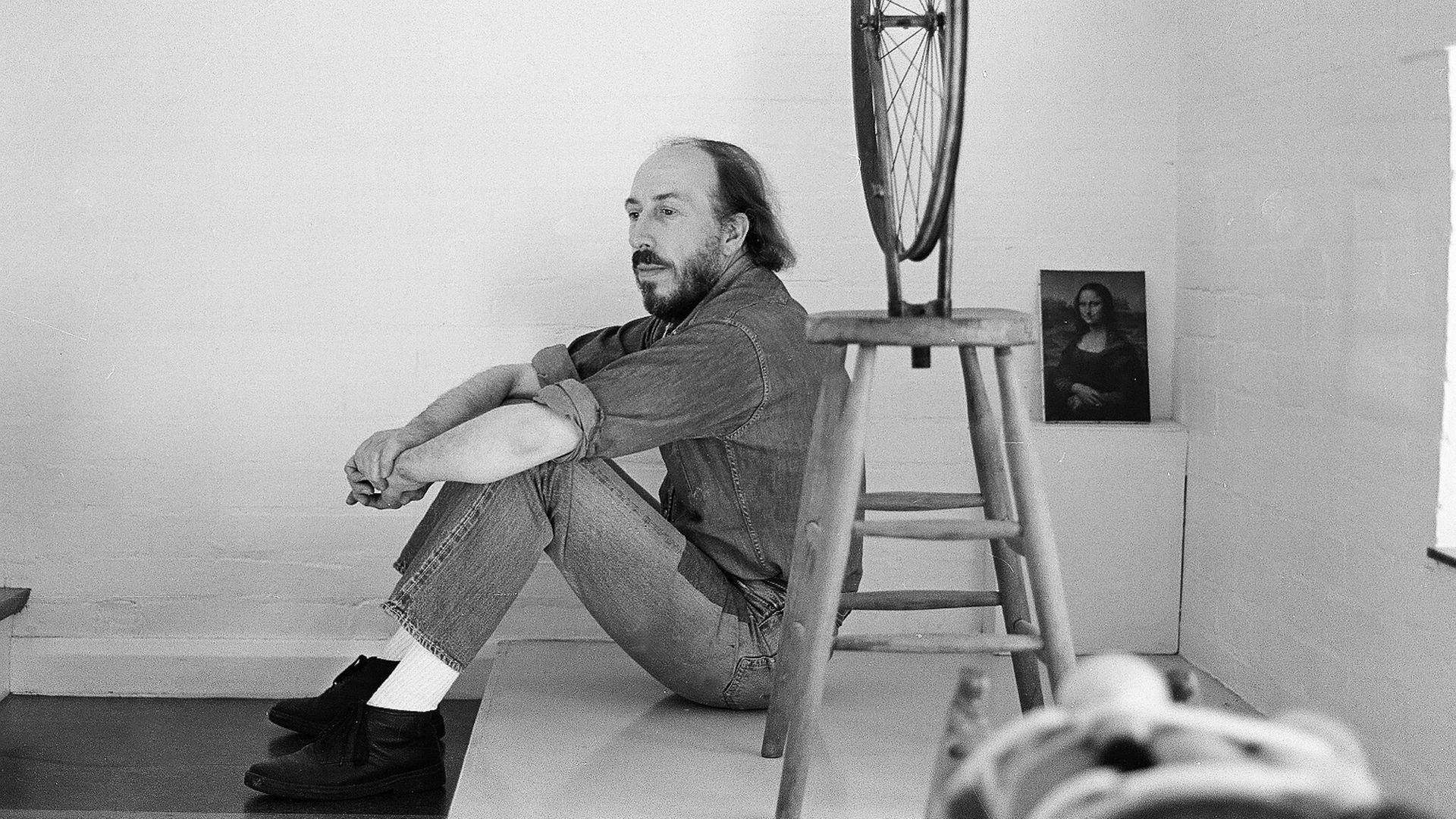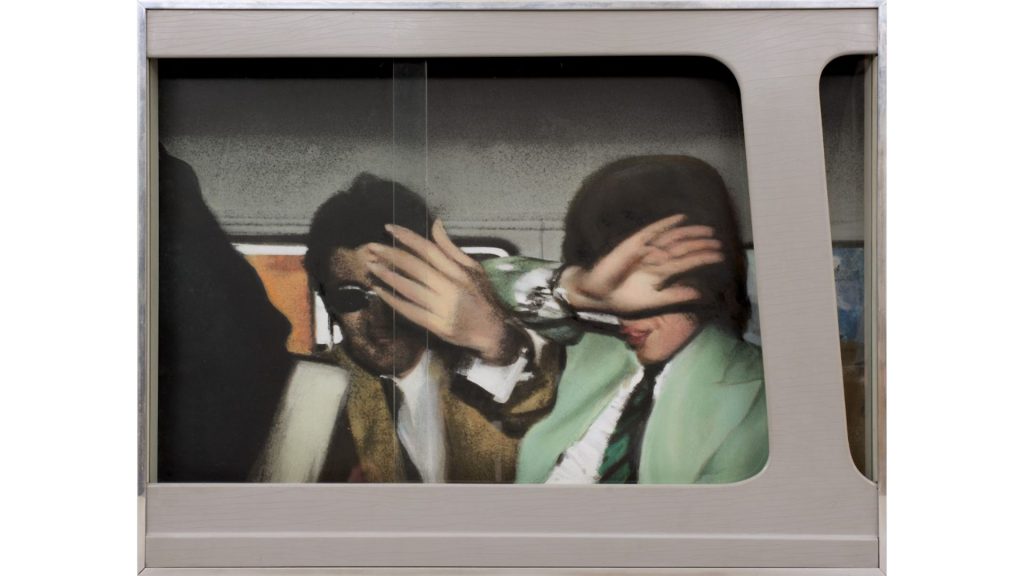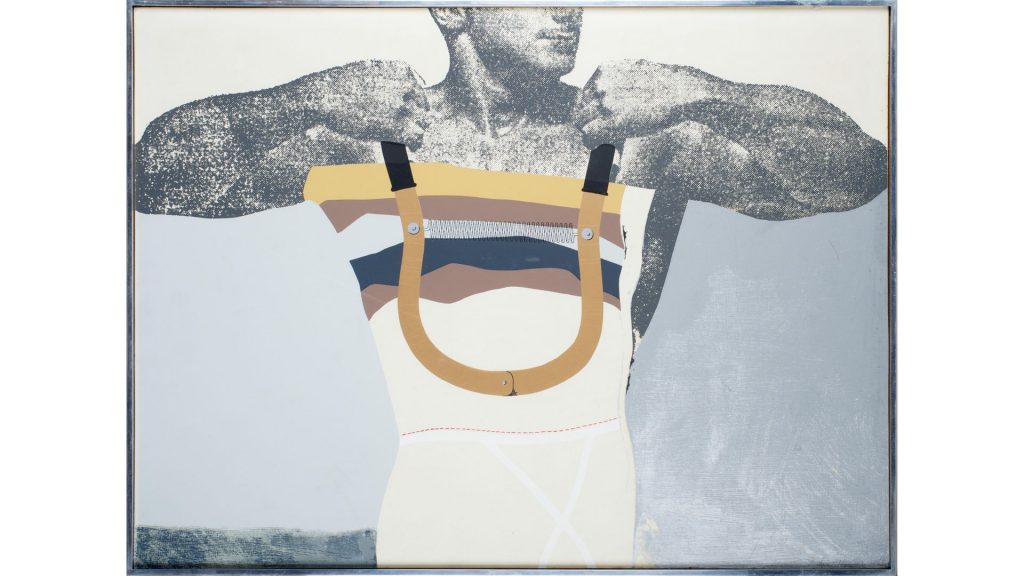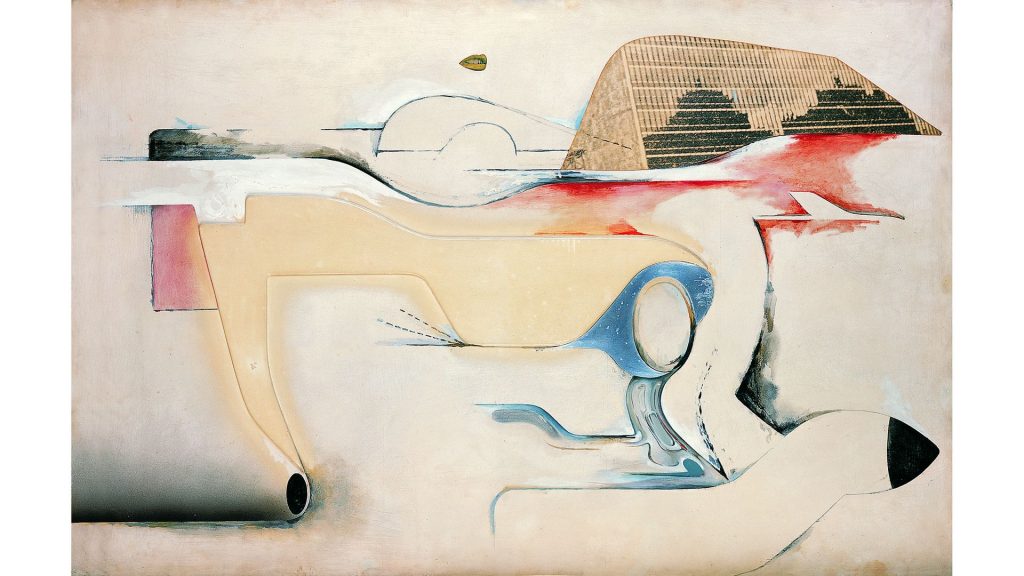
Richard Hamilton eschewed the knockabout nature of other purveyors of Pop Art, says Richard Holledge, but his work packed just as much of a punch.
Pop! Whaam! Blam. Exclamation marks!!! Technicolour explosions. That’s Pop Art for you.
The comic book whizz-bangs of Roy Lichtenstein and a group of post-war artists typified the 1960s for many – it was de rigueur for any student with artistic pretensions to sellotape on their wall a print of Lichtenstein’s red-lipped blonde murmuring forlornly: ‘Oh Brad.’
But the Pallant Gallery in Chichester, West Sussex, presents an altogether more subtle version of Pop Art. In the inevitably delayed Richard Hamilton: Respective it illustrates how Hamilton, who became Britain’s most influential pop artist, eschewed such knockabout fun.
Instead, his work interpreted a post-war Britain waking up to a flash new world of heightened consumerism in a way which was often admiring, often satirical and invariably ambiguous.
Hamilton is probably best known for his collage Swingeing London 67 which caught the zeitgeist of the 1960s with its portrayal of Mick Jagger handcuffed to art dealer Robert Fraser after they had been busted for drugs in 1967.

But he had been a champion and inspiration for Pop Art long before that. The movement began in the UK in the 1950s led by the so-called Independent Group which included Hamilton, Eduardo Paolozzi, Peter Blake and on the fringes, a young Terence Conran.
They were influenced by Dada, the art movement which used satire and nonsense in reaction to the horrors of the First World War, and Marcel Duchamp with his challenging technique of taking ready-made materials and presenting them as works of art.
According to one newspaper critic the Independent Group was “small, cohesive, quarrelsome, abusive” and that Hamilton’s wife Terri “developed a technique at meetings of responding to ideas she disapproved of by standing up and miming the pulling of a lavatory chain”.
They drew their inspiration from Hollywood movies, the increasingly pervasive influence of television and the advertising which came with it. They were attracted by the shiny new gadgets that now lined kitchen shelves, the sleek cars, stylish packaging, comic strips and cartoons.
One critic described their fascination with all this novelty as “verging on madness, a consuming obsession with modern living, modern technology, modern equipment, modern communications, modern materials, modern processes, modern attitudes”.
It did not take long for the US with Jasper Johns and his flags and targets, Robert Rauschenberg with collages of magazine cuttings, Andy Warhol and Roy Lichtenstein to be caught up with this fascination for the new.
It is fair to say that Hamilton (1922- 2011) was the more complex artist, though his description of what his art aimed to be was pretty direct: “Popular (designed for a mass audience); Transient (short-term solution); Expendable (easily forgotten); Low cost; Mass produced; Young (aimed at Youth); Witty; Sexy; Gimmicky; Glamorous; Big Business.”
These are the qualities which characterise his collage of 1956, Just What Is It That Makes Today’s Homes So Different, So Appealing? which parodies the way the living room of the day had become crowded with modish objects of desire and proofs of status; the TV set, the vacuum cleaner, a brand new tape recorder.
But, bizarrely, a body builder stands gripping a large lolly with the word ‘POP’ inscribed on it and a woman with bare breasts wearing a lampshade hat is reclining on, presumably, a new sofa. Not to mention a large tin of ham sat incongruously on a table in the middle of the room.
It was a reflection on the claim that capitalism was working, and working well in post-war Britain. Its people had “never had it so good”, Conservative prime minister Harold Macmillan boasted in 1957 while, Hamilton, an ardent anti-capitalist, was slyly expressing the uncomfortable truth that all that glitters is not gold.
Hard to find anything more ludicrous than Soft Pink Landscape (1971), a mockery of a 1960s advert for Andrex coloured toilet paper for which he painted a series of soft, pastel-coloured landscapes with a toilet roll in romantic focus.

Adonis in Y-Fronts (1963), was based on an advertisement for chest expanders which Hamilton found in an issue of the body-building magazine, Mr Universo, while Study for a Fashion Plate (1969), with a pouting model, one eye heavy with mascara, the other blotted out, hair strangely disconnected from her head, depicts an icon of the day – the fun loving dolly bird – and with wry humour unmasks her guileless vanity.
The exhibition’s curator Louise Weller, who is to give an online talk on Hamilton on February 25, describes his approach as “ironic affirmation”.
“He was engaged with his subject but always one step away from embracing it wholeheartedly,” she says. “He remained detached.”
The Pallant has been able to draw on its own substantial collection of Hamilton’s work which was donated by architect and author Colin St John Wilson who knew the artist from his involvement with the Independent Group.
Included in that collection is Respective, which has been adopted as the show’s title and is a reference to one of Hamilton’s earliest works (1951), an abstract exploring the use of perspective.
“We have a number of key works and lot of archival pieces which are almost as fascinating as the final ideas because it gives us the opportunity to see how he tested ideas before moving on,” says Weller. “It is interesting to come to an early work and see how it was reinterpreted.”
Hers is a Lush Situation (1958) is a case in point. An early sketch hangs alongside the finished work which shows a glamorous car overlaid with a collage of Sophia Loren’s lips.

The work explores the erotic association with the female form in car advertising at a time when no new motor could be launched without a glamorous female sprawled across the bonnet. Loren is as seductive as the car – or maybe vice versa.
Similarly with Swingeing London ’67 (1968), there are three iterations which are based on a paparazzi photograph taken outside Chichester magistrates court of Mick Jagger and Robert Fraser, who was Hamilton’s gallerist.
“He was outraged at the sentence sent on them and he wanted to respond to that,” says Weller. “It is really a protest piece about the media construct of a swinging London which really only involved a relatively few people and was actually quite a conservative place. There was a disparity between what was conceived as Sixties London and what was really happening.”
Hamilton’s collage of headlines from the time illustrates how media and ideas feed in to each other with lubricious headlines such as “Story of a girl in a fur-skin rug” and “Stones: ‘A strong, sweet smell of incense’” and trivia such as, “Meal in a cell for Mick Jagger” and the accusatory, “Tablets were found in green jacket”.
By now Hamilton’s attraction to the new and the bright had waned, dismayed, like many others, at the pervasive influence of American mass culture, which one commentator described as “full of corrupt brightness, of improper appeals and moral evasions”. Maybe the housewives with their smart new kitchens were not as happy as the commercials portrayed them.
As his work became more political it becomes harder to categorise him simply in one area only – as a pop artist.
A screen print Kent State (1970), took the image from a television news report of a university student shot during an anti-Vietnam War protest and Orange Order (1991) showed parading loyalist Orangeman in Northern Ireland during the Troubles.
In The Citizen (1981-83) he dramatised the so called dirty protest by IRA prisoners who demonstrated against being denied the status of political prisoner by daubing their cell walls with excrement.
Hamilton compared the IRA action with those of Christian martyrs and compared the brown marks on their cell walls like wall paintings akin to the swirling motifs of the Book of Kells, the illuminated manuscript of the four Gospels of the New Testament.
It is both a spiritual reaction but also a strangely remote standpoint to take on such an ugly state of affairs.
Weller says: “There is almost an analytical aspect to much of his work. In Kent State he was fascinated by how the image had been transposed from someone filming it through to the television set, through to his camera, and through to his silk screen.
“I think there is that sense of detachment in his work rather than a personal emotional outpouring at what was a tragic moment.
“Perhaps it is like the media, in which you present lots of different things with a kind of detachment and then you move on.”
So how significant is Hamilton and how important is Pop Art? By all accounts Hamilton was a knowledgeable, deeply serious artist as well as a generous, witty and funny character, but the Independent Group remained quite separate from the art world, discussing plans and ideas amongst themselves, and not seeking media attention or presenting themselves as a movement.
As for Pop Art, as Weller points out, there is a problem with labels not the art itself and she suggests that Hamilton’s work encouraged a different kind of thinking which led many artists towards minimalism and conceptualism.
Much of his time was taken up promoting the works of Marcel Duchamp who he met in the mid-1960s and greatly admired.
Hamilton reproduced The Bride Stripped Bare by her Bachelors, Even (The Large Glass) for a Tate retrospective on Duchamp in 1966 because the original – all nine fragile feet of it – was too delicate to travel from its home at Philadelphia Museum of Art. Duchamp called it his “hilarious picture” which depicts the erotic encounter between the ‘Bride’, in the upper panel, and her nine ‘Bachelors’ gathered timidly below.
The Pallant has a one of the silk screens of Duchamp’s Green Box, a collection of 94 documents which tried to explain his puzzling masterpiece.
There is more than a shade of Duchampian irony in Hamilton’s own work The Critic Laughs (1968) in which he perched a sugar-pink confectionery set of teeth, which his young son had bought him as a present, on top of his Braun electric toothbrush.
Hamilton absolutely admired the design aesthetic of the German electrical company, the sophistication of the products and even the chic packaging, but he couldn’t resist the joke. Ironic affirmation indeed.
Richard Hamilton: Respective is at the Pallant Gallery, Chichester, is extended indefinitely. An online talk on the artist’s themes and ideas by curator Louise Weller will be held on Thursday, February 25. To find out more visit pallant.org.uk










